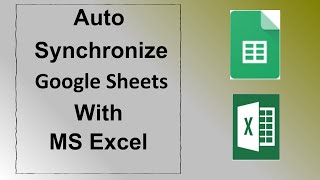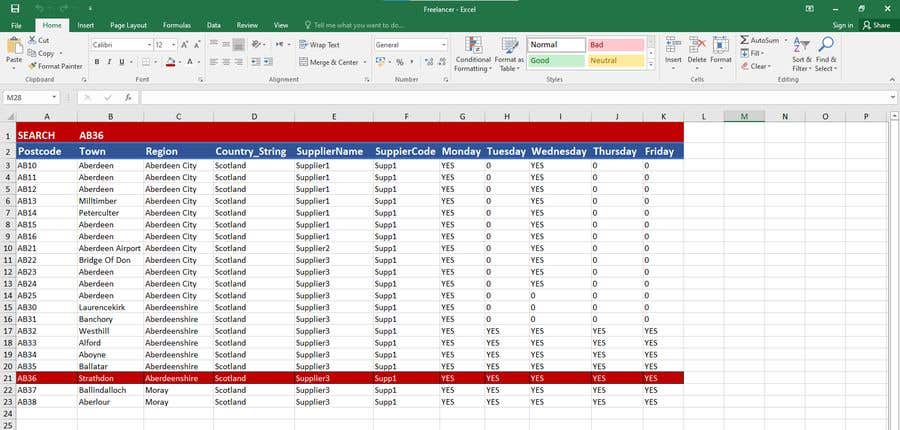5 Ways to Connect Google Sheets to Excel Seamlessly

In today's data-driven world, seamless integration between different software tools is essential for efficient workflow and data management. Both Google Sheets and Microsoft Excel are giants in the spreadsheet arena, each with its own set of unique features catering to various users' needs. However, there are times when you might need to connect these platforms to leverage the strengths of both. Here's how you can achieve that integration smoothly:
1. Using Microsoft Excel Add-ins

Microsoft has developed add-ins to directly interact with Google Sheets:
- Google Sheets Add-on for Excel: This add-in allows you to export data from Excel to Google Sheets effortlessly.
- How to Install: Search for “Google Sheets” in the Office Add-ins store in Excel, then follow the installation prompts.
- Functionality: You can export and import data between the two platforms, though real-time updates are not supported.

📌 Note: The functionality might be limited compared to native integration; consider the limitations of each add-in before committing.
2. Google Sheets API Integration

If you’re looking for more control or need to automate the data syncing:
- Google Sheets API: Provides programmatic access to Google Sheets data. You can use this API to manipulate data in Google Sheets from Excel using macros or other scripts.
- Steps to Integrate:
- Enable the Google Sheets API in Google Cloud Console.
- Create OAuth 2.0 credentials for your app.
- Write a VBA or Python script in Excel to interact with the API.

📍 Note: This method requires some programming knowledge but offers unparalleled flexibility.
3. Using Microsoft Power Query

Power Query in Excel provides a robust way to connect with various online data sources:
- Data Import from Web: Use Power Query to pull data directly from Google Sheets URLs.
- Steps:
- Go to Data > Get Data > From Other Sources > From Web.
- Enter the Google Sheets URL.
- Refresh to update data periodically or manually.

4. Google Sheets’ Export Feature

A simpler, albeit manual, approach for occasional updates:
- Export to Excel: Google Sheets can export its data as Excel (.xlsx) files.
- Steps:
- Open the Google Sheets document.
- File > Download > Microsoft Excel (.xlsx).
- Save the file and open in Excel.
5. Third-Party Services

Consider using third-party services for real-time synchronization:
- Services like Zapier: Can automate workflows between different tools.
- How it Works:
- Set up triggers in Google Sheets (e.g., a new row added).
- Set up actions in Excel (e.g., add or update rows).
- Table with Comparison:
Service Features Cost Zapier Automation, Multi-tool integration Free & Paid IFTTT Simple automation, limited integration Free & Pro 

In conclusion, the ability to connect Google Sheets with Excel allows for a more cohesive data management strategy. Whether you choose a direct add-in, API integration, or third-party services, each method provides unique benefits. Remember, the right choice depends on your specific needs, like real-time data syncing, automation, or occasional manual updates. Keep in mind the limitations and capabilities of each solution to find the perfect fit for your workflow.
What are the primary benefits of integrating Google Sheets and Excel?

+
The key benefits include streamlined data management, real-time updates, improved data accuracy, and the ability to leverage the best features of both platforms for analysis and collaboration.
Can I sync data in real-time between Google Sheets and Excel?

+
Real-time syncing is possible through third-party services like Zapier or IFTTT, or through custom solutions using the Google Sheets API, but it requires setup and potentially ongoing maintenance.
Is any programming knowledge required for these integrations?

+
While many integration methods don’t require programming, using Google Sheets API does. However, there are also user-friendly options like add-ins and third-party services that don’t necessitate coding skills.
Are there any potential limitations when connecting Google Sheets to Excel?

+
Yes, limitations can include data format compatibility issues, delays in data synchronization, dependency on internet connectivity for cloud-based methods, and varying feature availability between platforms.



